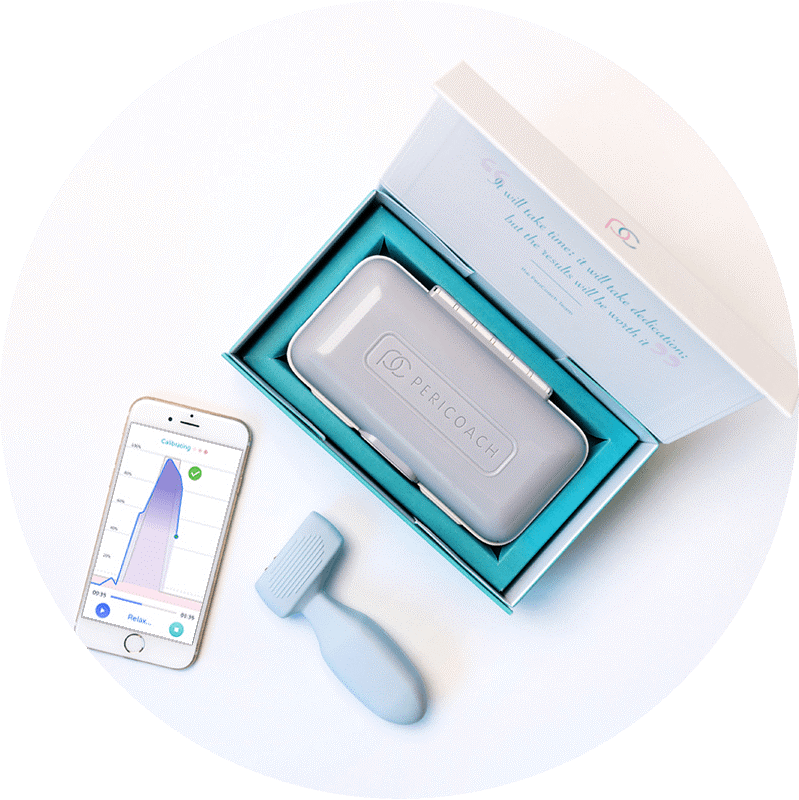Kegel Exercises During Pregnancy
If you’re pregnant, now is the ideal time to think about pelvic floor health. But, it’s never too late. If you’ve had a baby and you’re having bladder leaks or experiencing other weak pelvic floor symptoms, there are things you can do to strengthen the muscles of your pelvic floor. Kegel exercises are at the top of the list.
How Pregnancy and Childbirth Impact the Pelvic Floor
Your body goes through a lot during pregnancy and childbirth. The stress and strain can damage or weaken your pelvic floor. This important system of muscles and connective tissues stretches across your pelvis like a sling and supports your uterus, bladder, bowel, and rectum.
As your baby grows, the pressure on your pelvic floor increases, especially in the last trimester.
Then, when the big day comes, your body releases a flood of hormones in preparation for childbirth. One of these hormones (aptly called Relaxin) relaxes the muscles and ligaments in your pelvis and softens the cervix, so your baby can begin to descend through the birth canal.
This softening process, along with the strain of pregnancy and childbirth, can weaken your pelvic floor.
Benefits of Kegel Exercises During Pregnancy
Experts agree Kegels can help prevent pelvic floor problems after childbirth. If you’re pregnant, learning how to correctly contract and relax your pelvic floor muscles can also give you better control. This can mean less time in active labor.
Studies also show plenty of other benefits of doing Kegels during and after pregnancy, including:
- Improved bladder control: As many as one in three women will develop urinary incontinence (UI) at some point. It’s very common after childbirth. Kegels can help prevent or reduce stress urinary incontinence, which is when you leak urine when you laugh, cough, or sneeze, or do heavy lifting.
- Better bowel control: Fecal incontinence—leaking stool before you make it to the bathroom—is another problem some women face after childbirth. It can develop when the rectal muscles become stretched. Kegels strengthen these muscles, which can help prevent or improve fecal incontinence. Stronger muscles can also help ease bowel movements.
- Reduced risk of pelvic organ prolapse: Vaginal birth is a common cause of pelvic organ prolapse, which is when an organ in the pelvis (uterus, bladder, urethra, or rectum) drops down and presses against the vagina. Kegels during and after pregnancy can keep your pelvic floor muscles strong and reduce your risk of prolapse.
- Enhanced sexual pleasure: Kegels strengthen the muscles that contract during orgasm. Stronger muscles can enhance pleasure during sex and may help you reach orgasm more easily.
- Speedier post-partum recovery: Just as movement and light exercise can help you heal after an injury, pelvic floor exercise is thought to help speed up pelvic floor recovery after childbirth.
How to Do Kegel Exercises While Pregnant

Kegels are simple contract and relax exercises. The key is doing them correctly.
First, you need to identify the correct muscles. A good way to do this is by stopping the flow of urination midstream; if you’re successful, you’ve identified the right muscles. If you’re still having trouble, insert one or two fingers into your vagina and squeeze; if you feel pressure around your finger, you’re contracting the right muscles.
Also try to contract your anal sphincter muscles during Kegels; to identify them, squeeze your muscles as if you’re trying to not pass gas.
Focus on squeezing both these muscle groups during Kegels. Avoid contracting your butt, thigh, or abdominal muscles.
Before doing Kegels, go to the bathroom. You want an empty bladder before you start.
Next, get into a comfortable position. Lying down is best, but you can also do Kegels sitting down or standing up.
Try These Kegel Routines
- Hold for three, relax for three. Squeeze and hold for 3 seconds, then release for 3 seconds, and repeat.
- Contract and release. Quickly squeeze and release 10-20 times in a row.
- Long hold. Squeeze your muscles for 5 seconds, then release for 5 seconds. Aim for 10 repetitions per session.
When you first start doing Kegels, you may only be able to hold for 1 or 2 seconds. That’s ok. Over time you’ll be able to increase your hold time.
There’s no set rule for how often to do Kegels. Your doctor may recommend doing them every day or a few times a week. He or she may recommend starting with one set and gradually increasing your routine to two or three sets a day.
Remember to breathe normally while doing Kegel exercises—don’t hold your breath.
Are Kegel Exercises Good for Pregnancy?

Experts generally agree that when done properly, Kegels are safe during pregnancy. But, if you have undiagnosed pelvic pain or you have existing pelvic floor issues, like pelvic floor dysfunction or vaginismus, talk to your doctor before starting a Kegel exercise routine.
Many women find it helpful to use a Kegel exercise device, like PeriCoach. Talk to your OB-GYN or physiotherapist about whether it’s safe for you to use a pelvic floor exerciser while you’re pregnant.
Get Your Pelvic Floor into Shape with PeriCoach
You can do pelvic floor exercises effectively without a Kegel exerciser. But, it’s easy to forget to exercise regularly—especially if you have a new baby.
PeriCoach can help. The vaginally-insertable, FDA-cleared pelvic floor exercise device guides you through Kegel exercises and tracks your progress. PeriCoach shows you how you’re doing in real time as you squeeze against the device.
PeriCoach is easy to use. Simply download the app onto your phone (Android or iPhone), sync the device, and start exercising!
Learn more about how PeriCoach works and hear stories from women about how PeriCoach has helped them.



